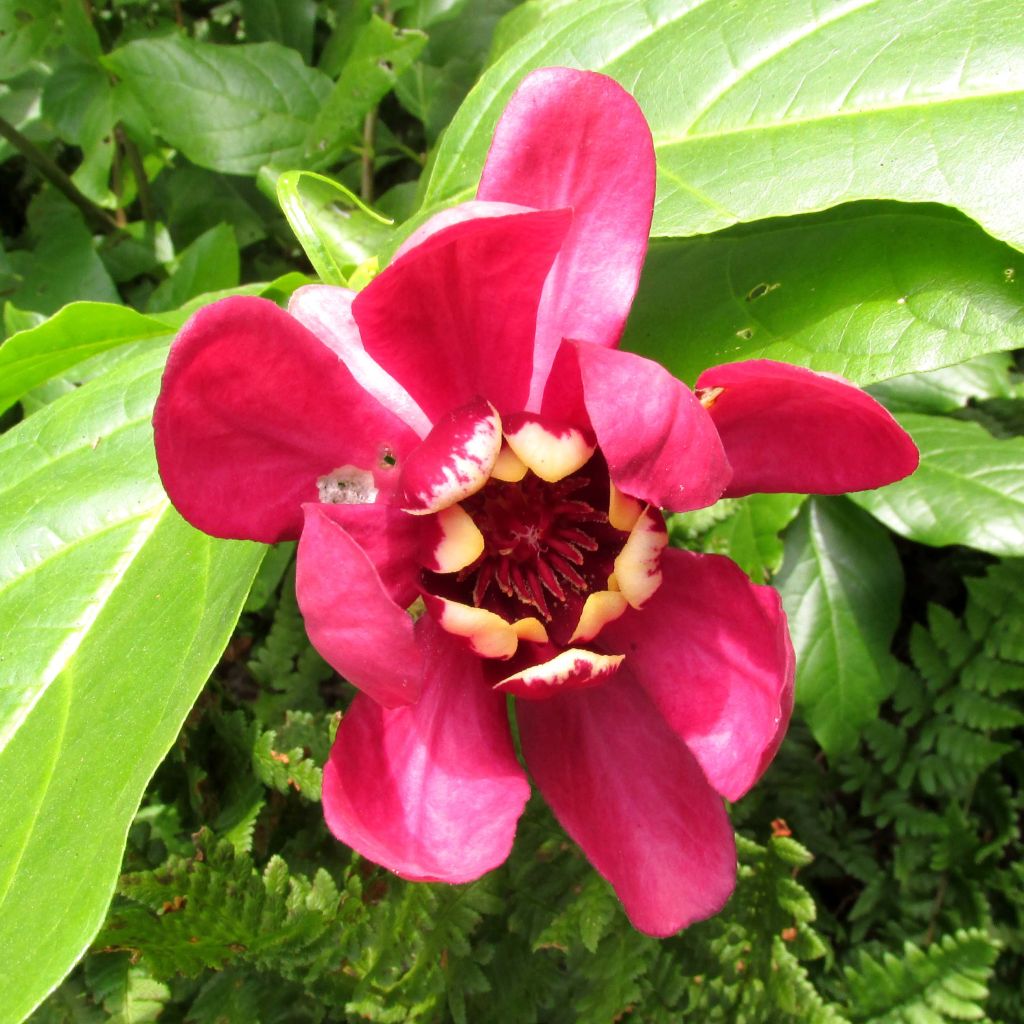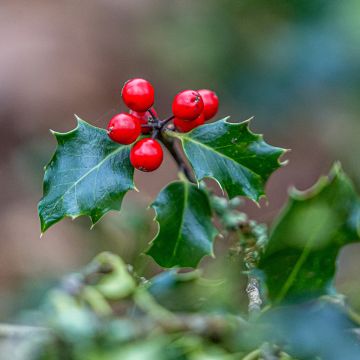

Calycanthus raulstonii Aphrodite- Sweetshrub


Calycanthus raulstonii Aphrodite- Sweetshrub


Calycanthus raulstonii Aphrodite- Sweetshrub


Calycanthus raulstonii Aphrodite- Sweetshrub


Calycanthus raulstonii Aphrodite- Sweetshrub


Calycanthus raulstonii Aphrodite- Sweetshrub


Calycanthus raulstonii Aphrodite- Sweetshrub


Calycanthus raulstonii Aphrodite- Sweetshrub


Calycanthus raulstonii Aphrodite- Sweetshrub
View more pictures
Hide images

Virginie S.

I'm sorry, but there is no text provided in the customer review to be translated. If you have the actual content of the review that needs to be translated into British English, please provide it so that I can assist you with the translation.
Virginie S. • 88 FR

Murielle S.

Planted in June 2022.
Murielle S. • BE

Muriel L.

Planted for 6 months
Muriel L. • 20 FR

Estelle T.

Estelle T. • 57 FR

Estelle T.

Planted in 2018, flowering in 2021.
Estelle T. • 57 FR

Claude B.

This is a case where there is no text to translate, so I will not provide a translation.
Claude B. • 56 FR

Claude B.

This is a case where there is no text to translate, so I will not provide a translation. If you have another customer review or text to translate, please feel free to submit it for translation.
Claude B. • 56 FR

Christophe L.

Flower - June 2021
Christophe L. • 93 FR
Calycanthus raulstonii Aphrodite- Sweetshrub
Calycanthus x raulstonii Aphrodite
Sweetshrub, Strawberry bush
Hello, the plant arrived in perfect condition, well packaged. I planted it right away—it has lovely glossy leaves. I can't wait to see it flower, especially since I have last year's white variety already budding. I'm thrilled with my purchase!
Evelyne, 31/03/2025
Special offer!
Receive a €20 voucher for any order over €90 (excluding delivery costs, credit notes, and plastic-free options)!
1- Add your favorite plants to your cart.
2- Once you have reached €90, confirm your order (you can even choose the delivery date!).
3- As soon as your order is shipped, you will receive an email containing your voucher code, valid for 3 months (90 days).
Your voucher is unique and can only be used once, for any order with a minimum value of €20, excluding delivery costs.
Can be combined with other current offers, non-divisible and non-refundable.
Home or relay delivery (depending on size and destination)
Schedule delivery date,
and select date in basket
This plant carries a 24 months recovery warranty
More information
We guarantee the quality of our plants for a full growing cycle, and will replace at our expense any plant that fails to recover under normal climatic and planting conditions.
Would this plant suit my garden?
Set up your Plantfit profile →
Description
Calycanthus Aphrodite is a recent variety of shrub with anemone-like flowers that will be appreciated for its very long and beautiful flowering period. This deciduous shrub bears large flowers resembling anemones, with a beautiful magenta-purple colour tinged with white at the centre, from late spring to the end of summer. Its fragrance, which can be surprising, evokes a subtle blend of strawberry and green apple aromas. Its large, vibrant green leaves enhance the purple colour of the flowers. Not widely found in our gardens, Calycanthus is nevertheless a low-maintenance shrub, as long as the soil is deep, well prepared, and remains moist. Another aspect is that you will not have to wait long for the flowers as it blooms from a young age!
The calycanthus is a deciduous shrub from the Calycanthaceae family. The Aphrodite hybrid cultivar is the result of cross-breeding between Calycanthus floridus, native to the southern United States, and Sinocalycanthus chinensis, a species closely related to the Calycanthus, but native to China. This hybrid was obtained in the USA by J. C. Raulston, who gave it the name Calycanthus (x) raulstonii. With a rather rounded bushy habit, it will reach an average height of 1.7 m (5 ft 7 in) and a spread of 1.5 m (4 ft 11 in) at maturity, which is around five years of age. Its slightly rigid branches bear leaves that are 7 to 13 cm (2.8 to 5.1 in) long, ovate and velvety, shiny on the upper side, lighter and greyer on the underside. They turn yellow in autumn. Its flowering is abundant from June to July, and continues throughout the summer, and even into autumn. Its original flowers, shaped like wide cups with a diameter of 5 to 7 cm (2 to 2.8 in), are composed of a corolla of wide petals, purplish-magenta in colour, surrounding a small central crown of small petals of the same purplish colour, bordered with white. The heart of the flower is occupied by purple stamens.
Still considered rare, this calycanthus is perfect for adding originality to your garden. It can be used, according to each gardener's desires and the space available, as a standalone specimen, in a free and countryside hedge, or in a large bed mixing perennials and small shrubs. The fragrance and beauty of the flowers can be better enjoyed near a pathway or not far from the terrace. To accompany it, one can choose, for example, daylilies, botanical peonies, the pheasant's eye tree, a variegated Cornus alba, a ninebark, a Diervilla splendens.
Calycanthus flowers resemble those of anemones in size and shape. But the fragrance is quite different as it is reminiscent of strawberries, which is what gave rise to the English name, "Strawberry bush".
Report an error about the product description
Calycanthus raulstonii Aphrodite- Sweetshrub in pictures






Plant habit
Flowering
Foliage
Botanical data
Calycanthus
x raulstonii
Aphrodite
Calycanthaceae
Sweetshrub, Strawberry bush
Cultivar or hybrid
Other Calycanthus
View all →Planting and care
Calycanthus Aphrodite tolerates semi-shaded situations quite well but performs much better in full sun. Similarly, it grows in any type of sufficiently deep and moist soil, but it will thrive better in a soil that is not too chalky. Feel free to combine it with your heathland beds as acidity does not scare it. However, pure heathland soil may be a bit too poor for it: add compost at the base of this shrub and keep the soil moist with mulch. It can be kept in a pot as well as in open ground; however, in a pot, care must be taken to prevent stagnant moisture. Make sure to remove the suckers if you do not want it to spread too much. Pruning should be done in late winter if necessary.
Planting period
Intended location
Care
-
, onOrder confirmed
Reply from on Promesse de fleurs
Similar products
Haven't found what you were looking for?
Hardiness is the lowest winter temperature a plant can endure without suffering serious damage or even dying. However, hardiness is affected by location (a sheltered area, such as a patio), protection (winter cover) and soil type (hardiness is improved by well-drained soil).

Photo Sharing Terms & Conditions
In order to encourage gardeners to interact and share their experiences, Promesse de fleurs offers various media enabling content to be uploaded onto its Site - in particular via the ‘Photo sharing’ module.
The User agrees to refrain from:
- Posting any content that is illegal, prejudicial, insulting, racist, inciteful to hatred, revisionist, contrary to public decency, that infringes on privacy or on the privacy rights of third parties, in particular the publicity rights of persons and goods, intellectual property rights, or the right to privacy.
- Submitting content on behalf of a third party;
- Impersonate the identity of a third party and/or publish any personal information about a third party;
In general, the User undertakes to refrain from any unethical behaviour.
All Content (in particular text, comments, files, images, photos, videos, creative works, etc.), which may be subject to property or intellectual property rights, image or other private rights, shall remain the property of the User, subject to the limited rights granted by the terms of the licence granted by Promesse de fleurs as stated below. Users are at liberty to publish or not to publish such Content on the Site, notably via the ‘Photo Sharing’ facility, and accept that this Content shall be made public and freely accessible, notably on the Internet.
Users further acknowledge, undertake to have ,and guarantee that they hold all necessary rights and permissions to publish such material on the Site, in particular with regard to the legislation in force pertaining to any privacy, property, intellectual property, image, or contractual rights, or rights of any other nature. By publishing such Content on the Site, Users acknowledge accepting full liability as publishers of the Content within the meaning of the law, and grant Promesse de fleurs, free of charge, an inclusive, worldwide licence for the said Content for the entire duration of its publication, including all reproduction, representation, up/downloading, displaying, performing, transmission, and storage rights.
Users also grant permission for their name to be linked to the Content and accept that this link may not always be made available.
By engaging in posting material, Users consent to their Content becoming automatically accessible on the Internet, in particular on other sites and/or blogs and/or web pages of the Promesse de fleurs site, including in particular social pages and the Promesse de fleurs catalogue.
Users may secure the removal of entrusted content free of charge by issuing a simple request via our contact form.
The flowering period indicated on our website applies to countries and regions located in USDA zone 8 (France, the United Kingdom, Ireland, the Netherlands, etc.)
It will vary according to where you live:
- In zones 9 to 10 (Italy, Spain, Greece, etc.), flowering will occur about 2 to 4 weeks earlier.
- In zones 6 to 7 (Germany, Poland, Slovenia, and lower mountainous regions), flowering will be delayed by 2 to 3 weeks.
- In zone 5 (Central Europe, Scandinavia), blooming will be delayed by 3 to 5 weeks.
In temperate climates, pruning of spring-flowering shrubs (forsythia, spireas, etc.) should be done just after flowering.
Pruning of summer-flowering shrubs (Indian Lilac, Perovskia, etc.) can be done in winter or spring.
In cold regions as well as with frost-sensitive plants, avoid pruning too early when severe frosts may still occur.
The planting period indicated on our website applies to countries and regions located in USDA zone 8 (France, United Kingdom, Ireland, Netherlands).
It will vary according to where you live:
- In Mediterranean zones (Marseille, Madrid, Milan, etc.), autumn and winter are the best planting periods.
- In continental zones (Strasbourg, Munich, Vienna, etc.), delay planting by 2 to 3 weeks in spring and bring it forward by 2 to 4 weeks in autumn.
- In mountainous regions (the Alps, Pyrenees, Carpathians, etc.), it is best to plant in late spring (May-June) or late summer (August-September).
The harvesting period indicated on our website applies to countries and regions in USDA zone 8 (France, England, Ireland, the Netherlands).
In colder areas (Scandinavia, Poland, Austria...) fruit and vegetable harvests are likely to be delayed by 3-4 weeks.
In warmer areas (Italy, Spain, Greece, etc.), harvesting will probably take place earlier, depending on weather conditions.
The sowing periods indicated on our website apply to countries and regions within USDA Zone 8 (France, UK, Ireland, Netherlands).
In colder areas (Scandinavia, Poland, Austria...), delay any outdoor sowing by 3-4 weeks, or sow under glass.
In warmer climes (Italy, Spain, Greece, etc.), bring outdoor sowing forward by a few weeks.














































